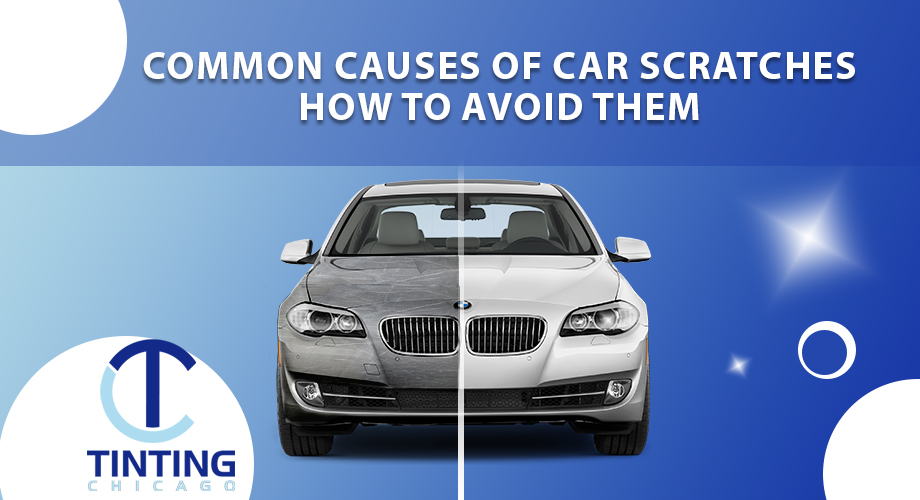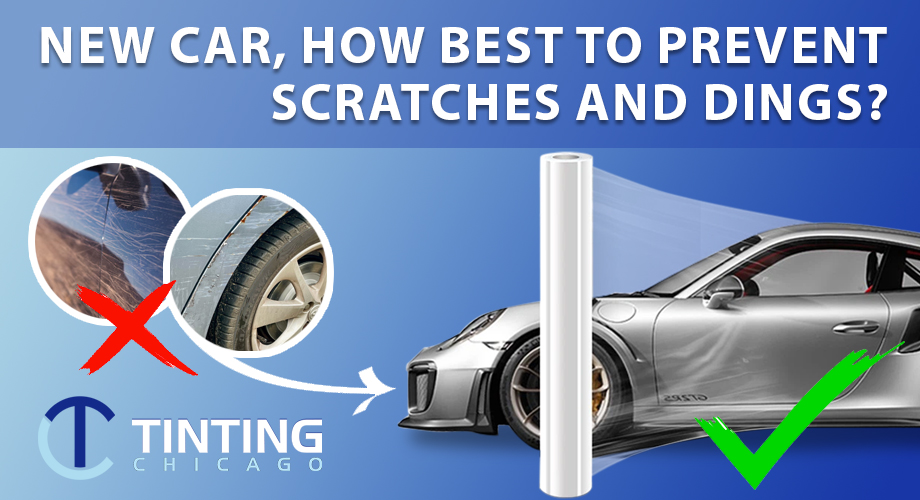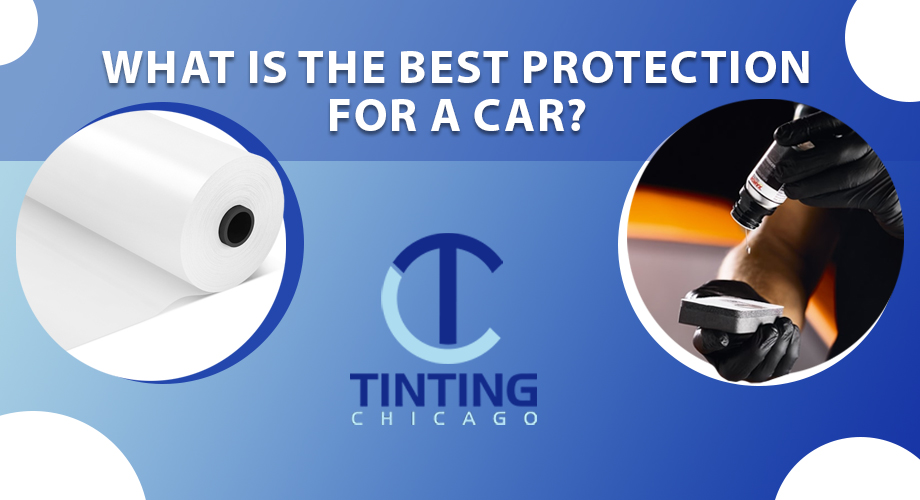


































































































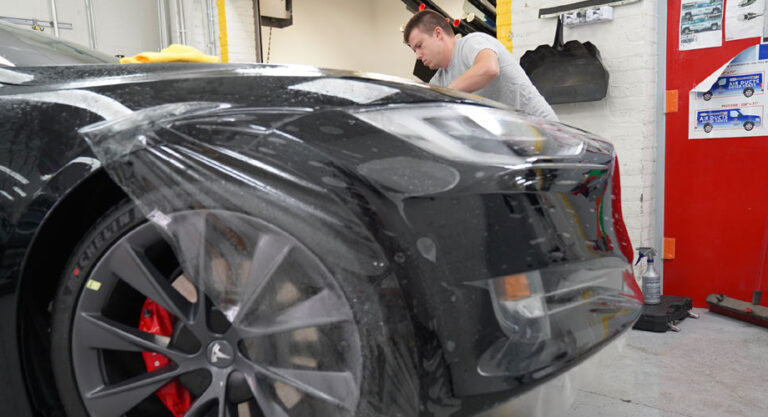
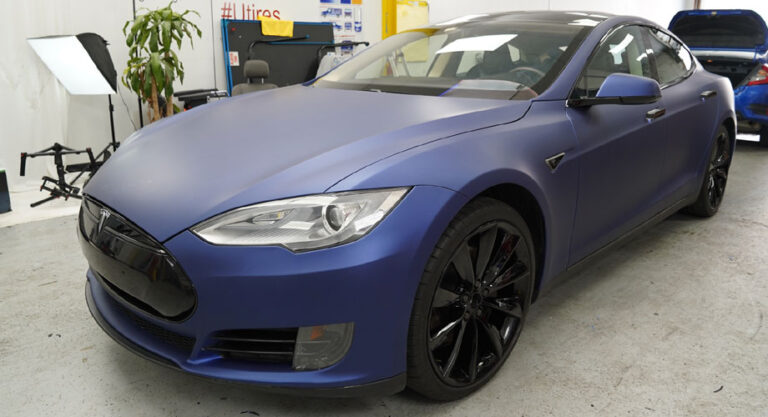

















































































































Modern automotive paint is durable and lightweight. It’s only 0.004-0.006 inches thick and has four layers – primer, basecoat, color coat, and clear coat. These layers are strong enough to protect the metal against elements. However, the paint is also delicate and thin enough to preserve the vehicles from scratches. For professional detailers, it’s clear that once this protective system is compromised, it’s difficult and costly to restore. Of course, there are various ways to fix scratches, depending on how deep the damage goes. But it’s wiser to invest in prevention and not in repair – it will save you time, money, and a lot of frustration. Let’s learn more about what you can do to avoid annoying scratches and environmental wear.

Everything you should know about types of car scratches
Car scratches come in all shapes and sizes, and knowing what type you’re dealing with can save you time and money on repairs.
- Clear coat scratches are the least serious – they only affect the top layer and can usually be polished out with a good compound.
- Paint scratches go a bit deeper; they reach the color layer and usually need touch-up paint or a professional fix.
- Primer scratches are worse – they expose the primer beneath the paint. This damage easily leads to rust.
- Deep scratches cut all the way to the metal and often require sanding, filling, and repainting.
- Hairline scratches are thin, surface-level marks, often caused by improper washing.
- Swirl marks come from poor washing or polishing techniques and can make your paint look dull.
When you know what kind of scratch you have, it’s easier to determine whether a DIY fix will work or if it’s time to see a technician.
Ways to protect your car from scratches
Did you know that more than half of drivers have experienced damage to their vehicles in supermarket car parks? It’s very upsetting to see scratches on your car, but avoiding them is easier than you think. Here’s what you can do:
- Park smart. If possible, choose spots away from other cars, shopping carts, and busy areas. Park in the shade or a garage to protect against sun and weather damage.
- Use a car cover. If you oftem part outside, ger a good car cover, It will shield your paint from dust, bird droppings, and tree sap.
- Wash regularly. Even dirt and debris can scratch your paint over time. Wash your car often using a microfiber cloth and proper car wash soap.
- Skip automatic car washes. Brush-based car washes can leave swirl marks. Choose hand washing or touchless options.
- Wax it up. Waxing adds a protective layer, which reduces scratches and keeps your car glossy.
- Be careful with keys and jewelry. Avoid keys, bags, or sharp objects on your car, and be mindful of jewelry when leaning against it.
- Install door edge guards. These help prevent dings and chips when opening doors in tight spaces.
- Keep your distance – Staying back from other cars reduces the risk of debris hitting your paint.
- Use the right cleaning tools. Don’t use rough sponges and towels. Microfiber cloths and soft brushes are much safer.
PPF against scratches – how does it work?
In addition to the above tips, you can install PPF. It’s the best protection you can find on the market today. Paint Protection Film (PPF) is a transparent, durable layer applied to a car’s exterior. PPF shields its surface from scratches, chips, and other damage. It’s made from thermoplastic urethane which is highly resistant to impacts and self-restores minor scratches. PPF absorbs the force of debris, rocks, or abrasions and does not allow them to damage the car’s paint. You can fully wrap the car with this protective film or apply it only to high-risk areas – the hood, bumper, fenders, and mirrors.
PPF is great not only against scratches. It withstands UV rays, chemicals, and extreme temperatures, without yellowing or cracking. Light scratches disappear from the film’s surface when exposed to heat, such as sunlight or warm water. PPF is more expensive than wax or sealants, but its long-lasting protection makes it a worthwhile investment for preserving a car’s appearance and resale value.
our latest news!
Car scratch fixes – DIY hacks and pro solutions
Scratches happen even with the best care. No matter how careful you are, one day you will spot a scratch on your car. It can be the result of a small mishap in a parking lot or a stray branch brushing against your car. Just a few seconds, and an ugly scratch is here. Even tiny damage can spoil the car’s appearance. Here is how you can fix it:
DIY fixes for minor scratches
Clear coat scratches. These are shallow and only affect the top protective layer. A good polishing compound can smooth them out and restore shine. Hand or machine buffing can make them nearly invisible.
Minor paint Scratches. If the scratch goes beyond the clear coat but not too deep, touch-up paint can help. Apply carefully, let it dry, and polish the area for a seamless look. About 35% of car owners do this themselves to cut costs.
Professional repair for deeper scratches
Paint correction. When scratches are still there after DIY methods, the next step is professional machine polishing. This process removes a thin layer of clear coat, erases imperfections and restores gloss. Costs range from $150 to $500, depending on the damage.
Repainting panels. If a scratch is so deep that metal is exposed, simple fixes won’t work. You will need professional help to sand, prime, and repaint the damaged area for a flawless finish. This prevents further damage and rust.
The most important thing is to act fast on deep scratches. Exposed metal rusts 25% faster if left untreated, especially in Chicago with its harsh winters. Fixing deep damage quickly prevents further deterioration.
In Illinois, Tinting Chicago can help you choose the best anti-scratch PPF product. We use high-quality, durable PPF products from the best manufacturers to provide superior protection against scratches, chips, and environmental damage. Our experts will walk you through the options and ensure you get the right fit for your needs. We have several PPF packages – you will surely get the best scratch shield, whether you’re driving through city streets or cruising on the highway. Invest in prevention and not repair. Stop by one of Tinting Chicago’ workshops today – all consultations are free. Or give us a call for more information.
FAQ
What protects cars from scratches?
There are many anti-scratch measures you can use to keep the car’s paint intact. PPF is the most powerful solution against minor abrasions. Additionally, you may wax the car’s paintwork regularly and use car covers to reduce the risk of scratches.
How do I scratch-proof my car?
It’s nearly impossible to fully scratch-proof a car, but you can minimize the risk of this damage with simple proactive steps. Use PPF, ceramic coating or wax. Avoid parking near other vehicles or in tight spaces, and regularly wash your car to remove dirt and debris that can cause scratches.
Can I avoid scratches on a car?
Some scratches are inevitable, but you still can reduce them by driving carefully, avoiding bushes or tight spaces, and parking in safe areas. Regular washing and waxing your car creates a protective layer. Mud flaps or bumper guards also help a lot. And consider installing PPF, the most powerful protection of car paintwork.
How can I protect the car exterior from dog scratches?
Use seat covers or pet hammocks to keep your dog away from the doors. Additionally, use a protective film or door guards to protect the exterior from claws. Also, train your dog to enter and exit the car calmly – it prevents accidental scratches.
How can I protect the car door from scratches?
You can install door edge guards or clear protective films. Parking farther away from other vehicles or in wider spaces also reduces the risk of door dings. Learn to open doors carefully in tight spaces and teach your passengers to do the same.





























 Send a message
Send a message Send a message
Send a message